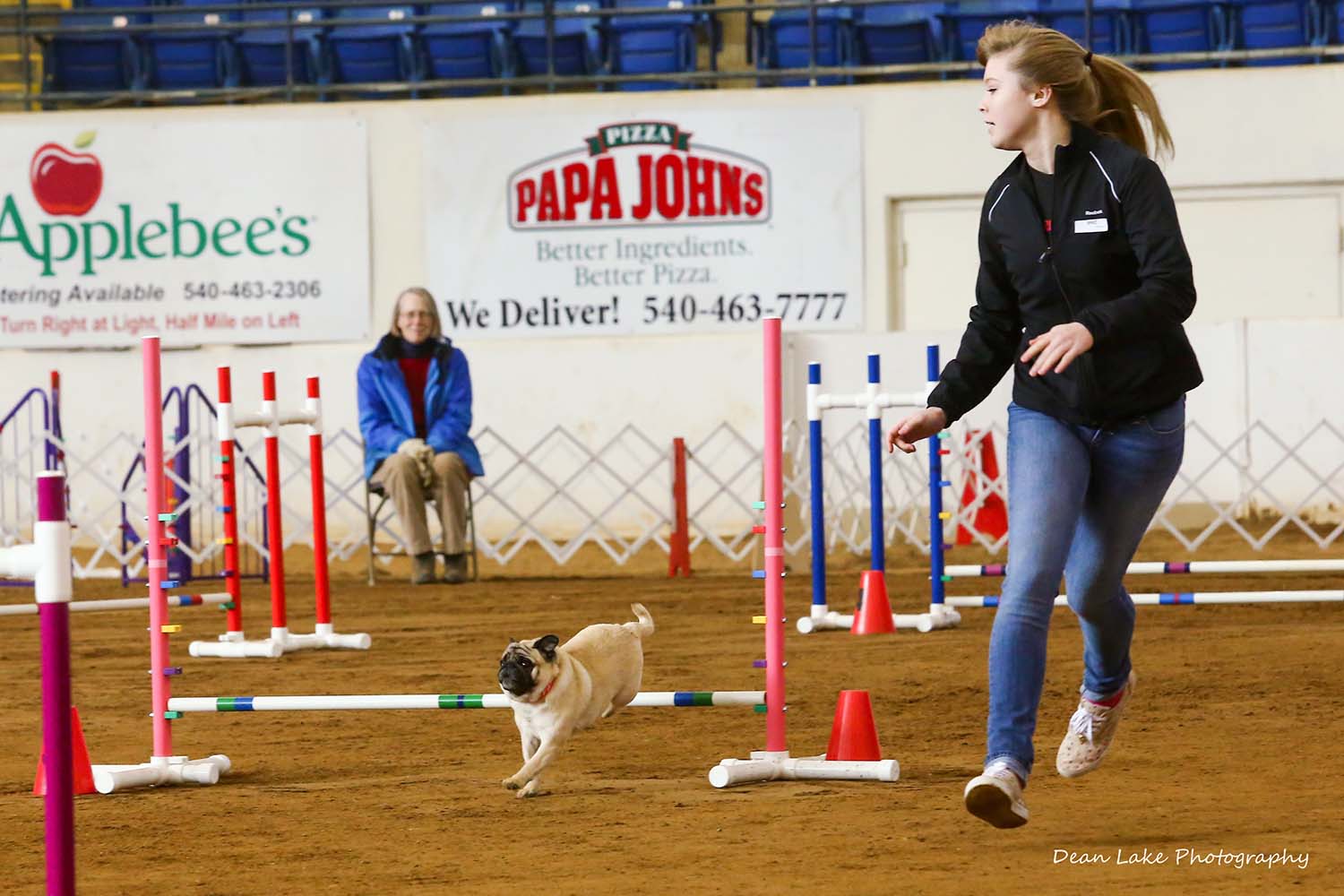Wahoo’s Stormbreaker Yaxeka, Wahoo’s Tawsee Terra and Heuberg’s Light My Fire are the names of sophomore Emma Johnson’s three pugs and show dogs, but for short they are called Jax, TT and Ember. Johnson’s career with dog shows began four years ago with Jax, who wasn’t her dog at the time.
“I had no clue what I was doing,” Johnson said. “I was in the ring with a bunch of other people and they all looked really nice and fancy and I was wearing jeans. I was meeting the dog for the very first time and I was so nervous. Jax and I had a really good connection; he watched me the whole time and it made everything better.”
A friend of Johnson’s mom owned Jax and invited Johnson to show him in the ring. Jax became Johnson’s dog after that.
“You co-own dogs in dog shows,” Johnson said. “You will co-own it with the breeder and you have an agreement where if you finish your dog, then they’ll breed to produce more champion babies. Jax is mine now because we signed over the papers and took him home with us.”
After that first show, Johnson became hooked on dog shows. Since then, Johnson has competed in around 100 shows and has traveled as far as Kalamazoo, M.I.
“I’ve always loved dogs. That’s the most important thing to me; that I love them. I like to be with them and I like to groom them, because that’s really fun,” Johnson said. “[A dog show] is basically like a performance. I love when people watch me, so that’s why I do it. I like to perform.”
Johnson began going to show classes after her first show for specific training on how to be a handler.
“The first time I went [to class], I kind of thought I knew what I was doing. I went around the ring and I put my dog on the table and [the teacher] just laughed because I was so bad,” Johnson said. “He ended up helping me a lot. I learned so much from him and now I’m like a mini professional handler.”
Johnson has been competing in conformation shows where a judge evaluates each dog on how well it conforms to its “breed standard.” Johnson’s pugs have their own specific standards.
“For pugs, they have to have a nice, big, square head that shows a lot of expression, like a lot of wrinkles,” Johnson said. “They have to have a short back and short legs so that they’re ‘cobby,’ which is like the square shape, and you want to put a little more weight on them so that they don’t have a waistline.”
Before a dog show, the handler or the breeder needs to prepare their dog by grooming it, which includes bathing, trimming, blow-drying and even adding color to the fur.
“If [your dog] needs something on its face like more blackness, you just put a little black, and if your dog is white, you have to put white chalk on it,” Johnson said. “That’s not really allowed, but you do it anyway−everyone does it.”
When being evaluated in the ring, the judges look for the dog that fits best to the breed standard, and that dog wins Best in Show.
“[The judges] examine the head and the body and make sure [the dog] has muscle tone, because you don’t want a couch potato, so we have to exercise with our dog so they have muscle,” Johnson said.
Johnson has started competing in agility because of the low-pressure environment. Agility is a dog competition where the handler guides their dog through a series of jumps and other obstacles in a race for time and accuracy. Johnson recently won first place in agility with her dog TT.
“There are a lot of ups and downs. When you’re in conformation, they judge you and your dog and it’s kind of [the judges’] personal opinion,” Johnson said. “If you go through a bad losing streak, you get down on yourself. But then I found agility and I started working with TT, and we started to win and it made me feel better about myself. There is really no competition for agility; you’re kind of beating yourself and seeing how well trained your dog is.”
There are multiple obstacles a dog must maneuver through when competing in Jumpers and Weaves.
“There are these weave poles, which are the hardest thing in the world to teach your dog how to do,” Johnson said. “They are these poles your dog has to go in and out of. It’s aggravating to try and teach your dog how to do it, but TT just got it down, so we are doing great. We are getting our weaves in. For Jumpers and Weaves [you] jump over different types of jumps; there are weave poles and there might be a tunnel. But for Standard, you have the big A-frame and tunnels and [your dog] has to stay on a table, which is hard for TT because she doesn’t like to stay still. Then you have to jump through a tire, go up a catwalk then [walk on] a teeter.”
Johnson’s experience competing in shows with her dogs has influenced her dream of becoming a vet.
“Ever since I got my dogs, people have told me how caring I am and how nurturing and motherly I am,” Johnson said. “I treat my dogs like they’re my own babies. They have inspired me to be a better person and be more caring about others.”
Johnson’s favorite aspect about competing is getting to work with her dogs.
“[I enjoy] working with my dogs,” Johnson said. “Honestly, they’re my best friends.”
— Lauren Merrill


